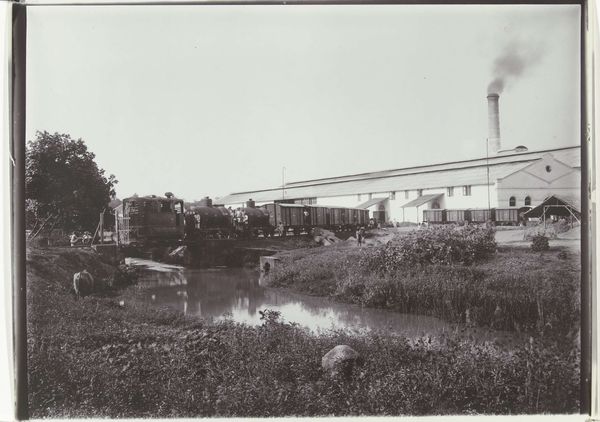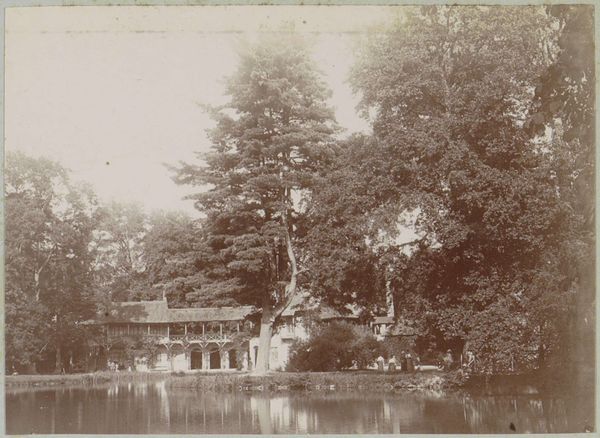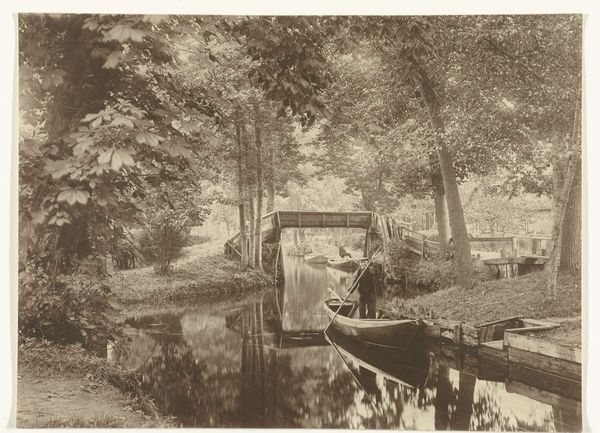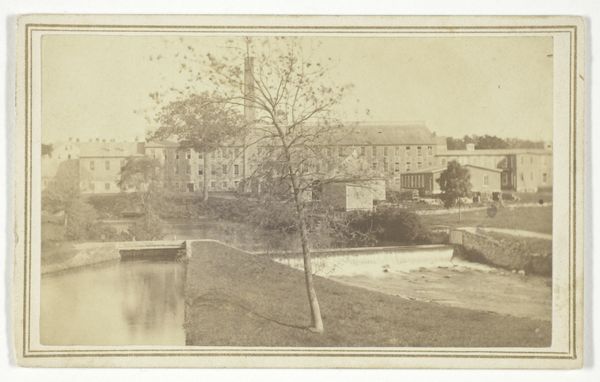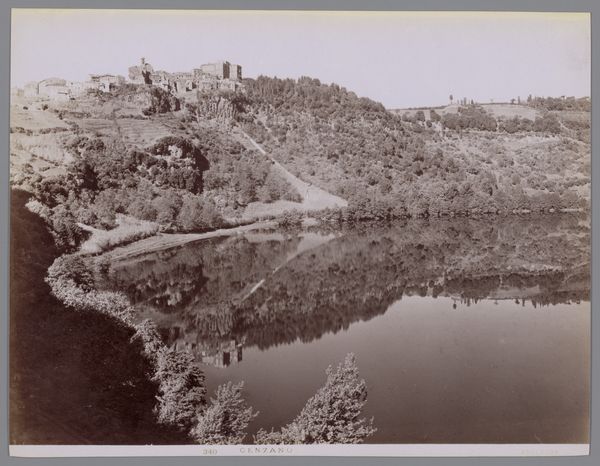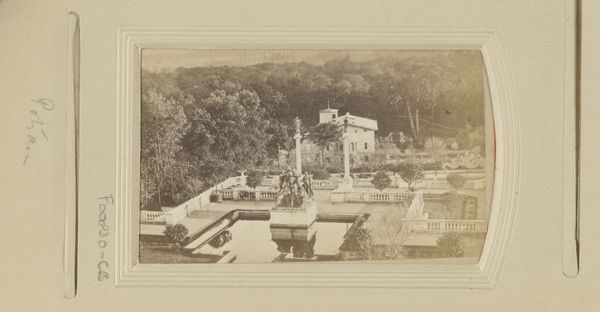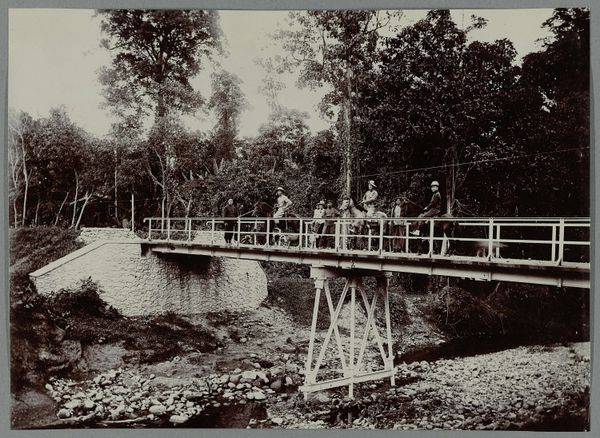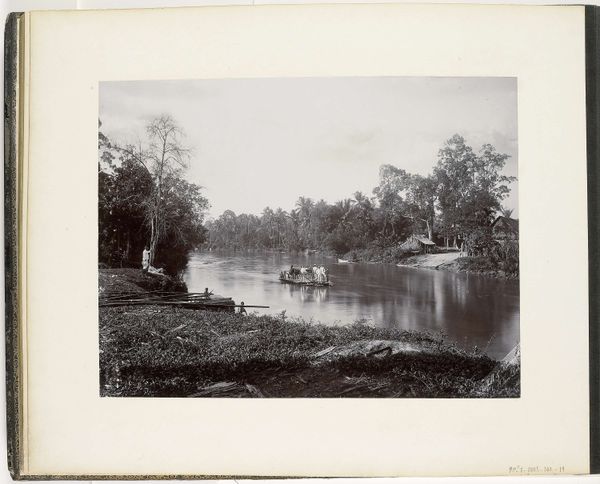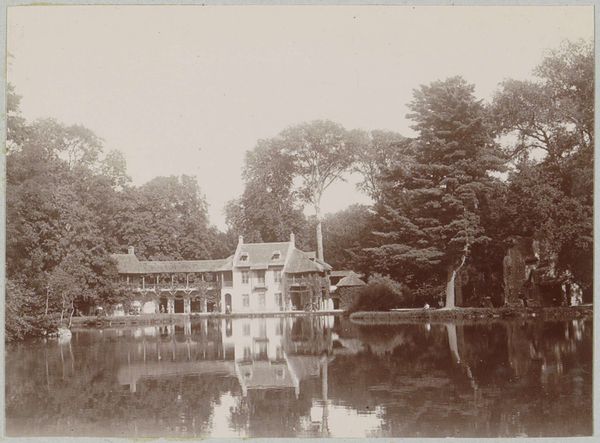
photography, gelatin-silver-print
#
boat
#
war
#
landscape
#
river
#
photography
#
gelatin-silver-print
#
hudson-river-school
Copyright: Public Domain
Curator: O'Sullivan's "White House Landing, Pamunkey River," created in 1864, immediately strikes me with its textural density. Look at the rich, almost palpable surfaces! Editor: It's somber, almost mournful. The greyscale emphasizes the stark contrast between the grounded earth and the open river. What narrative elements do you find compelling here? Curator: Note the dilapidated wooden structure in the foreground juxtaposed with the boats suggesting movement but rendered still. The trees on either side act as framing devices that flatten pictorial space while the overall composition draws the eye towards the center—anchored, paradoxically, by modes of transportation. It's as if O’Sullivan is setting up a dialectic tension, where land meets water and war impedes peace. Editor: Interesting take. I see the boats not merely as “modes of transportation”, but as products of intense wartime labor. Imagine the sawmills churning out lumber, the iron foundries forging parts, the mobilization of workers-- perhaps even enslaved labor-- to construct these vessels that both support and perpetuate the machinery of war. It raises uncomfortable questions about the hands that built these ships. Curator: It makes me consider the materiality of conflict, and how a relatively “new” medium like gelatin-silver printing becomes entangled in its very visual encoding. Look, photography provides an illusion of objective rendering but becomes another material for producing wartime spectacle and ideological production. Editor: Right. And speaking of medium, what impact do you think the silver gelatin process has on how the image is received, particularly then? Curator: I find its smooth tonal range contributes to the image's pervasive atmospheric haze—akin, almost, to an atmospheric or psychic fog. That haziness invites prolonged viewing precisely to decipher form within it. Editor: Precisely, because the silver is a raw material transformed under specific conditions – chemical baths, precise timing – we have to ask, what survives, and what gets obscured, altered, or erased? In what way might such alchemy of materials offer an uncanny mirroring of Civil War events and outcomes? Curator: It underscores the role of visual documents both in memorializing, but also in potentially distorting events through selection and artistic rendering. Editor: And how often are these stories really just about wood, metal, and silver-- reshaped, repurposed, or recontextualized at pivotal junctures in the theater of war. Well, that certainly provides ample food for thought. Curator: Indeed, a testament to the power of art and visual culture, forcing us to see its critical relation to events beyond the aesthetic register alone.
Comments
No comments
Be the first to comment and join the conversation on the ultimate creative platform.
